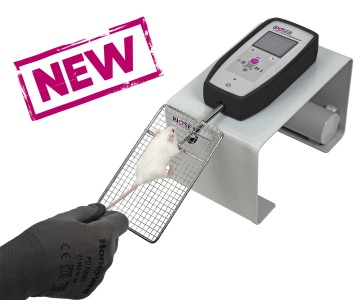Authors
S.P. Yun, D. Kim, S. Kim, SM. Kim, S.S. Karuppagounder, S-H. Kwon, S. Lee, T=I. Kam, S. Lee, S. Ham, J.H. Park, V.L. Dawson, T.M. Dawson, Y. Lee, H.S. Ko
Lab
Sungkyunkwan University School of Medicine, Suwon, South Korea and Johns Hopkins University School of Medicine, Baltimore, USA
Journal
Molecular Neurodegeneration
Abstract
Background
Mutations in glucocerebrosidase (GBA) cause Gaucher disease (GD) and increase the risk of developing Parkinson’s disease (PD) and Dementia with Lewy Bodies (DLB). Since both genetic and environmental factors contribute to the pathogenesis of sporadic PD, we investigated the susceptibility of nigrostriatal dopamine (DA) neurons in L444P GBA heterozygous knock-in (GBA +/L444P ) mice to 1-methyl-4-phenyl-1,2,3,6-tetrahydropyridine (MPTP), a selective dopaminergic mitochondrial neurotoxin.
Method
We used GBA +/L444P mice, α-synuclein knockout (SNCA −/− ) mice at 8 months of age, and adeno-associated virus (AAV)-human GBA overexpression to investigate the rescue effect of DA neuronal loss and susceptibility by MPTP. Mitochondrial morphology and functional assay were used to identify mitochondrial defects in GBA +/L444P mice. Motor behavioral test, immunohistochemistry, and HPLC were performed to measure dopaminergic degeneration by MPTP and investigate the relationship between GBA mutation and α-synuclein. Mitochondrial immunostaining, qPCR, and Western blot were also used to study the effects of α-synuclein knockout or GBA overexpression on MPTP-induced mitochondrial defects and susceptibility.
Results
L444P GBA heterozygous mutation reduced GBA protein levels, enzymatic activity and a concomitant accumulation of α-synuclein in the midbrain of GBA +/L444P mice. Furthermore, the deficiency resulted in defects in mitochondria of cortical neurons cultured from GBA +/L444P mice. Notably, treatment with MPTP resulted in a significant loss of dopaminergic neurons and striatal dopaminergic fibers in GBA +/L444P mice compared to wild type (WT) mice. Levels of striatal DA and its metabolites were more depleted in the striatum of GBA +/L444P mice. Behavioral deficits, neuroinflammation, and mitochondrial defects were more exacerbated in GBA +/L444P mice after MPTP treatment. Importantly, MPTP induced PD-like symptoms were significantly improved by knockout of α-synuclein or augmentation of GBA via AAV5-hGBA injection in both WT and GBA +/L444P mice. Intriguingly, the degree of reduction in MPTP induced PD-like symptoms in GBA +/L444P α-synuclein (SNCA) −/− mice was nearly equal to that in SNCA −/− mice after MPTP treatment.
Conclusion
Our results suggest that GBA deficiency due to L444P GBA heterozygous mutation and the accompanying accumulation of α-synuclein render DA neurons more susceptible to MPTP intoxication. Thus, GBA and α-synuclein play dual physiological roles in the survival of DA neurons in response to the mitochondrial dopaminergic neurotoxin, MPTP.
BIOSEB Instruments Used
Grip strength test (BIO-GS3)
Source :
https://molecularneurodegeneration.biomedcentral.com/articles/10.1186/s13024-017-0233-5

 Pain - Thermal Allodynia / Hyperalgesia
Pain - Thermal Allodynia / Hyperalgesia Pain - Spontaneous Pain - Postural Deficit
Pain - Spontaneous Pain - Postural Deficit Pain - Mechanical Allodynia / Hyperalgesia
Pain - Mechanical Allodynia / Hyperalgesia Learning/Memory - Attention - Addiction
Learning/Memory - Attention - Addiction Physiology & Respiratory Research
Physiology & Respiratory Research











![Dynamic Weight Bearing 2.0 – Postural Module [Add-on]](https://bioseb.com/733-home_default/dynamic-weight-bearing-20-add-on-postural-module.jpg)
























 Pain
Pain Central Nervous System (CNS)
Central Nervous System (CNS) Neurodegeneration
Neurodegeneration Sensory system
Sensory system Motor control
Motor control Mood Disorders
Mood Disorders Other disorders
Other disorders Muscular system
Muscular system Joints
Joints Metabolism
Metabolism Cross-disciplinary subjects
Cross-disciplinary subjects CONFERENCES & MEETINGS
CONFERENCES & MEETINGS 